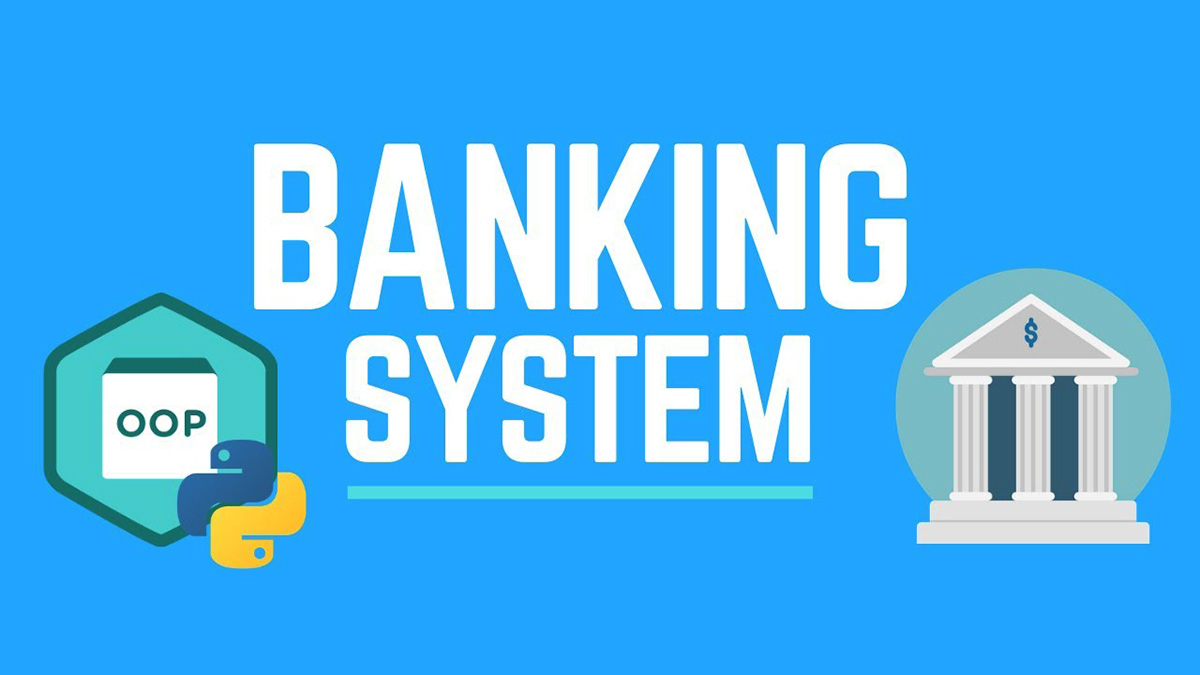Home>Finance>How To Create An Accounting System For A Small Business


Finance
How To Create An Accounting System For A Small Business
Published: October 8, 2023
Learn how to create an effective accounting system for your small business. Manage your finances efficiently with our expert finance tips and strategies.
(Many of the links in this article redirect to a specific reviewed product. Your purchase of these products through affiliate links helps to generate commission for LiveWell, at no extra cost. Learn more)
Table of Contents
- Introduction
- Step 1: Define your financial goals
- Step 2: Choose an accounting method
- Step 3: Set up a chart of accounts
- Step 4: Track income and expenses
- Step 5: Manage accounts receivable and accounts payable
- Step 6: Reconcile bank statements
- Step 7: Generate financial reports
- Step 8: Implement internal controls
- Conclusion
Introduction
As a small business owner, establishing a solid accounting system is crucial for maintaining control over your financial records. A well-organized and efficient accounting system not only helps you track your income and expenses but also enables you to make informed decisions based on accurate financial data. Whether you’re just starting out or looking to update your existing system, this article will guide you through the process of creating an effective accounting system for your small business.
Managing your finances can often feel like a complex and daunting task, especially if you don’t have a background in accounting. However, with the right approach and tools in place, you can simplify the process and gain a clearer understanding of your business’s financial health.
In this article, we will walk you through a step-by-step process to help you create an accounting system tailored to your small business’s needs. We will cover essential aspects such as defining your financial goals, choosing the right accounting method, setting up a chart of accounts, tracking income and expenses, managing accounts receivable and accounts payable, reconciling bank statements, generating financial reports, and implementing internal controls.
By implementing a robust accounting system, you can effectively track your business’s financial performance, identify areas for improvement, make informed decisions, and ensure compliance with legal and tax obligations.
Whether you’re a solopreneur or have a small team, a well-structured accounting system will provide you with the foundation you need to stay organized and maximize your business’s financial success.
Now, let’s dive into the step-by-step process of creating an accounting system for your small business.
Step 1: Define your financial goals
Before setting up an accounting system for your small business, it’s important to define your financial goals. Having a clear understanding of what you want to achieve financially will help you tailor your accounting processes and strategies to meet those objectives. Here are a few key aspects to consider when defining your financial goals:
- Revenue targets: Determine your desired revenue levels for the upcoming year or a specific period. This will serve as a benchmark to track your business’s financial performance.
- Profitability: Set targets for the level of profitability you aim to achieve. This can include gross profit margins, net profit margins, or specific profit targets for certain products or services.
- Cash flow management: Determine your goals for managing cash flow effectively, such as maintaining a certain level of working capital, reducing accounts receivable collection time, or managing accounts payable efficiently.
- Financial stability: Define your long-term financial stability goals, such as building up an emergency fund, reducing debt, or saving for specific business expansion projects.
- Investment opportunities: Identify any potential investment goals you may have, such as allocating funds to research and development, acquiring new equipment, or expanding into new markets.
By clearly defining your financial goals, you’ll have a roadmap to guide your business’s financial decision-making and help you stay focused on achieving your objectives. These goals will also serve as a basis for measuring the success of your accounting system.
Once you’ve established your financial goals, it’s important to regularly review and reassess them to ensure they align with the changing needs and circumstances of your business. This ongoing evaluation will enable you to make any necessary adjustments to your accounting system and strategies.
Remember, your financial goals should be specific, measurable, attainable, relevant, and time-bound (SMART goals). This will allow you to track your progress and make informed decisions based on real data.
Now that you’ve defined your financial goals, let’s move on to the next step: choosing an accounting method.
Step 2: Choose an accounting method
Choosing the right accounting method is crucial for accurately recording your business’s financial transactions. There are two main methods to choose from: cash basis accounting and accrual basis accounting. Let’s explore each method to help you decide which one is the best fit for your small business.
Cash Basis Accounting:
In cash basis accounting, you record revenue and expenses when cash is received or paid out. This method is simpler and more straightforward, making it ideal for small businesses with straightforward transactions. With cash basis accounting, you have a real-time view of your available cash flow, which can be beneficial for managing day-to-day operations. However, this method may not provide a complete picture of your business’s financial health, as it does not account for future income and expenses.
Accrual Basis Accounting:
Accrual basis accounting, on the other hand, records revenue and expenses when they are earned or incurred, regardless of when cash is received or paid out. This method provides a more comprehensive view of your business’s financial performance. It allows you to track accounts receivable and accounts payable, provides a more accurate representation of your business’s profitability, and enables you to analyze trends and make informed financial decisions. However, accrual basis accounting can be more complex and requires careful record-keeping.
When choosing between cash basis accounting and accrual basis accounting, consider the nature of your business, its size, and your long-term financial goals. If you have inventory, work on long-term projects, or extend credit to customers, accrual basis accounting may be more suitable as it provides a better representation of your business’s financial position. Conversely, if your business has straightforward transactions and you need simplicity, cash basis accounting may be the better option.
It’s important to note that once you’ve chosen an accounting method, you generally need to stick with it for tax reporting purposes. However, consult with a tax professional to ensure compliance with relevant tax regulations and determine if any exceptions or changes can be made.
Now that you’ve chosen an accounting method, you can proceed to the next step: setting up a chart of accounts.
Step 3: Set up a chart of accounts
Setting up a chart of accounts is a critical step in organizing your financial transactions and categorizing them properly. A chart of accounts is a systematic listing of all the accounts used by your business to record financial transactions. It provides a framework for organizing and tracking income, expenses, assets, liabilities, and equity.
Here are the key steps to follow when setting up your chart of accounts:
- Identify the accounts you need: Determine the specific accounts you need to track for your business. This can include revenue accounts, expense accounts, asset accounts, liability accounts, and equity accounts. The accounts you choose will depend on the nature and complexity of your business.
- Create a numbering system: Assign a unique code or number to each account to create a logical structure within your chart of accounts. This numbering system should be organized in a way that makes it easy to find and understand the purpose of each account.
- Group accounts into categories: Group similar accounts together to create categories and subcategories. This will help you navigate through your chart of accounts and generate meaningful financial reports.
- Consider your reporting needs: Take into account the type of financial reports you need for your business. This could include profit and loss statements, balance sheets, and cash flow statements. Structure your chart of accounts to facilitate the generation of these reports.
- Review and refine: Regularly review and refine your chart of accounts as your business evolves. Make adjustments as needed to ensure it aligns with your changing financial requirements and goals.
It’s important to maintain consistency and accuracy when recording transactions in your chart of accounts. This will ensure that your financial reports are reliable and provide meaningful insights into your business’s financial performance.
Consider using accounting software to streamline the process of setting up and managing your chart of accounts. Many accounting software options come with pre-defined chart of accounts templates that you can modify to suit your specific needs.
Once you have set up your chart of accounts, you can move on to the next step: tracking income and expenses.
Step 4: Track income and expenses
Tracking your income and expenses is a key component of any effective accounting system. It allows you to monitor your business’s financial health, make informed decisions, and fulfill your tax obligations accurately. Here are some steps to help you track your income and expenses efficiently:
- Record all income: Ensure that you properly record and categorize all sources of income your business receives. This may include sales revenue, fees, commissions, or any other form of income. Keep track of each transaction’s date, amount, and source in your accounting system.
- Categorize expenses: Categorize your expenses into relevant categories such as office supplies, rent, utilities, payroll, marketing, and any other expenses specific to your business. This will help you analyze your spending patterns and identify areas for potential cost savings.
- Use digital tools: Consider using accounting software or cloud-based platforms to automate the tracking process. These tools can simplify data entry, ensure accuracy, and provide real-time insights into your financial transactions.
- Reconcile accounts regularly: Reconcile your bank accounts and credit card statements with your accounting records regularly. This helps identify any discrepancies and ensures your records accurately reflect your actual financial position.
- Consider using separate accounts: Maintain separate business bank accounts and credit cards to streamline tracking and avoid mixing personal and business transactions. This separation makes it easier to monitor and analyze your business’s financial activities.
- Automate recurring transactions: Set up recurring transactions in your accounting system for regular expenses such as rent or subscription services. This saves time and reduces the possibility of overlooking important payments.
- Review and analyze: Regularly review your income and expenses to gain insights into your business’s financial performance. Analyze trends, identify any areas of concern, and make adjustments as necessary to achieve your financial goals.
By diligently tracking your income and expenses, you can maintain accurate financial records, identify potential financial challenges, and make informed decisions to improve your business’s financial health.
Now that you have a solid system in place for tracking income and expenses, it’s time to move on to the next step: managing accounts receivable and accounts payable.
Step 5: Manage accounts receivable and accounts payable
Effectively managing your accounts receivable and accounts payable is essential for maintaining a healthy cash flow and building strong relationships with your customers and suppliers. Here are some key steps to help you manage these aspects of your small business:
- Accounts Receivable:
- Establish clear payment terms: Clearly define your payment terms and communicate them to your customers. This includes specifying payment due dates, late payment penalties, and any discounts or incentives for early payment.
- Issue timely and accurate invoices: Send out invoices promptly and ensure they are accurate and detailed. Include all necessary information such as the description of goods or services provided, payment terms, and any applicable taxes.
- Monitor and follow up on outstanding invoices: Regularly review your accounts receivable and follow up on any overdue payments. Send reminders and initiate collection efforts as necessary. Consider implementing automated systems to streamline this process.
- Offer multiple payment methods: Provide your customers with various payment options to make it convenient for them to pay. This may include accepting credit cards, online payment platforms, or bank transfers.
- Accounts Payable:
- Establish centralized payment processes: Streamline your accounts payable process by centralizing it through a dedicated department or individual. This helps ensure consistency and efficiency in managing payments to suppliers.
- Negotiate favorable payment terms: Work with your suppliers to negotiate payment terms that align with your cash flow. Negotiate discounts for early or bulk payments, if feasible, to take advantage of cost-saving opportunities.
- Monitor and track invoices: Keep a detailed record of all invoices received from suppliers and track payment due dates. This helps avoid late payments and potential penalties.
- Schedule and prioritize payments: Develop a payment schedule based on your cash flow projections and prioritize payments based on their due dates and importance to your business operations.
- Take advantage of vendor credit options: If available, explore vendor credit options that allow you to extend your payment period without incurring additional costs.
Effective management of accounts receivable and accounts payable will help you maintain positive financial relationships with your customers and suppliers. It will also contribute to a healthy cash flow, reduce late payment fees, and improve your business’s overall financial performance.
With accounts receivable and accounts payable under control, let’s proceed to the next step: reconciling bank statements.
Step 6: Reconcile bank statements
Reconciling your bank statements is a crucial task to ensure the accuracy and integrity of your financial records. It involves comparing your recorded transactions in your accounting system with the transactions reported by your bank. Here are the steps to effectively reconcile your bank statements:
- Obtain the bank statement: Retrieve the latest bank statement for the relevant accounting period. Ensure you have both the bank statement and access to your accounting software.
- Compare transactions: Review each transaction listed on your bank statement and compare them with your recorded transactions in your accounting system. Check for any discrepancies, missing transactions, or errors.
- Reconcile starting balance: Compare the starting balance on your bank statement with the balance in your accounting system at the beginning of the statement period. Make any necessary adjustments to ensure they match.
- Check deposits and withdrawals: Verify that all deposits and withdrawals listed on the bank statement match the corresponding transactions in your accounting system. Pay attention to any discrepancies and investigate them.
- Account for outstanding checks and deposits: Identify any outstanding checks or deposits that have not yet cleared the bank. Make note of these items and account for them in your reconciliation process.
- Include bank fees and interest: Take into account any bank fees or interest earned that may be recorded on the bank statement but not yet in your accounting system. Make the necessary adjustments to reflect these transactions.
- Adjust for errors or discrepancies: If you identify any errors or discrepancies during the reconciliation process, investigate them promptly. Make the appropriate adjustments in both your accounting system and your bank records.
- Finalize the reconciliation: Once you have accounted for all transactions and made the necessary adjustments, ensure that your ending balance matches the balance reported on your bank statement. This indicates a successful reconciliation.
Reconciling bank statements on a regular basis, such as monthly or quarterly, helps identify potential errors, fraudulent activities, or banking issues. It provides confidence in the accuracy of your financial records and ensures that your cash flow is effectively managed. This process also helps uncover any discrepancies that may require further investigation.
By diligently reconciling your bank statements, you can maintain accurate financial records, detect any discrepancies early on, and make informed decisions based on the real financial position of your business.
With bank statement reconciliation complete, let’s proceed to the next step: generating financial reports.
Step 7: Generate financial reports
Generating financial reports is a crucial step in assessing the overall financial health and performance of your small business. These reports provide valuable insights into your business’s profitability, liquidity, and financial stability. Here’s how to generate meaningful financial reports:
- Income Statement: The income statement, also known as the profit and loss statement, summarizes your business’s revenue, expenses, and net income over a specific period. It helps you track your business’s profitability and identify areas where you can increase revenue or reduce expenses.
- Balance Sheet: The balance sheet provides a snapshot of your business’s financial position at a given point in time. It includes your assets, liabilities, and equity, giving you an overview of your business’s net worth and financial stability.
- Cash Flow Statement: The cash flow statement tracks the movement of cash in and out of your business. It helps you understand how cash is generated and used over a specific period, highlighting your business’s ability to meet its financial obligations.
- Accounts Receivable Aging Report: This report provides a breakdown of your outstanding customer invoices based on their age. It helps you assess how quickly customers are paying their invoices and allows you to take appropriate actions to manage cash flow effectively.
- Accounts Payable Aging Report: The accounts payable aging report categorizes your outstanding vendor invoices based on their age. It helps you monitor payments due to suppliers, manage your cash flow, and maintain good relationships with vendors.
- Financial Ratios: Financial ratios provide insights into your business’s financial performance and help you compare it against industry benchmarks. Examples of ratios include profitability ratios, liquidity ratios, and solvency ratios.
Utilizing accounting software can simplify the process of generating financial reports. Most accounting software offers pre-designed templates and tools that can automatically generate these reports for you. Additionally, it allows you to customize reports to meet your specific needs and preferences.
Regularly review and analyze your financial reports to gain a deeper understanding of your business’s performance and make informed decisions. Assessing trends, identifying areas for improvement, and tracking progress towards your financial goals become easier with accurate and up-to-date financial reports.
With comprehensive financial reports in hand, you are now ready for the next step, which is implementing internal controls.
Step 8: Implement internal controls
Implementing internal controls is crucial for safeguarding your business’s assets, ensuring the accuracy of financial information, and preventing fraud or errors. Internal controls help establish procedures and policies that promote accountability, transparency, and compliance. Here are some key areas to focus on when implementing internal controls:
- Separation of duties: Assign different individuals to handle different financial tasks to minimize the risk of fraud. For example, separate responsibilities for recording transactions, approving expenses, and reconciling accounts.
- Documented policies and procedures: Clearly document your financial policies and procedures to create a framework for consistent practices. This includes processes for approving expenses, handling cash, and recording transactions.
- Regular internal audits: Conduct regular internal audits to evaluate the effectiveness of your internal controls and identify any areas of weakness or vulnerability. The audits can be performed by an internal team or an external party.
- Physical safeguards: Implement physical safeguards such as secure storage for important financial documents, restricted access to cash or assets, and video surveillance, if necessary.
- Data backups and cybersecurity: Regularly backup your financial data to prevent loss or corruption. Implement cybersecurity measures to protect your systems from unauthorized access or data breaches.
- Reconciliation and review: Regularly reconcile accounts, review financial reports, and investigate any discrepancies or anomalies. This helps ensure the accuracy and integrity of your financial information.
- Employee training and awareness: Provide training to your employees on financial policies, procedures, and internal controls. Foster a culture of awareness and accountability to promote compliance and ethical behavior.
- Strict authorization processes: Establish stringent authorization processes for financial transactions. Implement levels of approval based on the amount or nature of the transaction.
Implementing internal controls is an ongoing process. Regularly assess and update your controls based on changes in business operations, industry regulations, or identified risks. By implementing strong internal controls, you can mitigate financial risks, protect your business’s assets, and maintain the accuracy and reliability of your financial records.
With internal controls in place, you have successfully implemented a comprehensive accounting system for your small business. Adhering to these steps and regularly reviewing and refining your processes will help you maintain accurate financial records, make informed decisions, and drive the success of your business.
Conclusion
Establishing a well-designed accounting system is essential for the success of your small business. By following the step-by-step process outlined in this article, you can create an efficient and effective system that will help you track income and expenses, manage accounts receivable and accounts payable, reconcile bank statements, generate insightful financial reports, and implement strong internal controls.
Defining your financial goals provides clarity and direction, allowing you to align your accounting system with your business objectives. Choosing the right accounting method, whether cash basis or accrual basis, ensures accurate recording of financial transactions that suit the nature of your business.
Setting up a chart of accounts allows you to organize and categorize transactions in a logical manner, facilitating comprehensive and meaningful financial reporting. Tracking income and expenses diligently provides you with a clear understanding of your business’s financial performance and enables informed decision-making.
Managing accounts receivable and accounts payable helps maintain healthy cash flow and fosters strong relationships with customers and suppliers. Reconciling bank statements ensures that your financial records align with your bank transactions, reducing errors and identifying potential issues.
Generating financial reports allows you to assess your business’s profitability, liquidity, and overall financial position. These reports serve as valuable tools for analyzing trends, identifying areas for improvement, and monitoring progress towards your financial goals.
Implementing internal controls safeguards your business’s assets, promotes accountability, and mitigates risks of fraud or errors. By establishing separation of duties, documenting policies and procedures, conducting regular internal audits, and implementing physical and cybersecurity safeguards, you can strengthen the integrity of your financial processes.
Remember, maintaining an accounting system requires ongoing attention and review. Regularly assess your system, make necessary adjustments, and stay updated with changes in regulations or industry best practices. Implementing a robust accounting system will provide you with the financial insights and control necessary to drive the success and growth of your small business.














